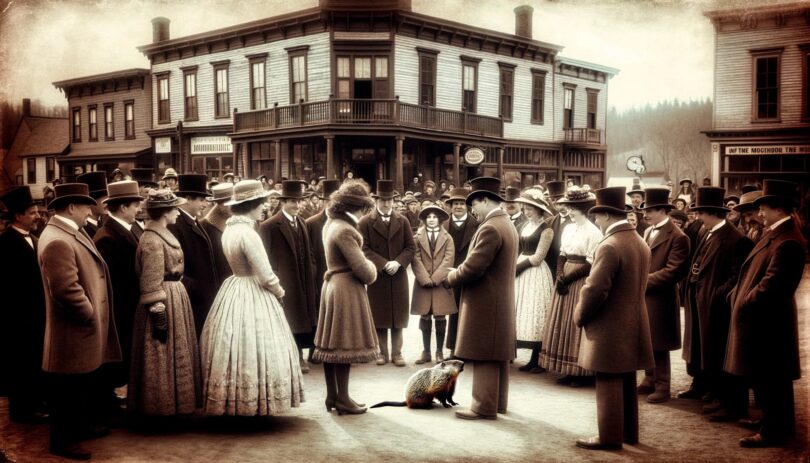Groundhog Day’s story begins in the mists of ancient Europe. The Celts celebrated Imbolc, a festival marking the midpoint of winter. This evolved into Candlemas Day, observed by Catholics on February 2nd, where candles were blessed to bring light and warmth to the remaining winter days. The weather on Candlemas was believed to predict spring, giving birth to sayings like, “If Candlemas be fair and bright, come, Winter, have another flight.”
The Germans added their twist with a folklore involving a hedgehog. According to their belief, if the hedgehog saw its shadow on Candlemas, it meant six more weeks of winter. When German settlers arrived in Pennsylvania, they brought this tradition but replaced the hedgehog with the groundhog, a native North American species.
The first official Groundhog Day in the United States was celebrated in 1887 in Punxsutawney, Pennsylvania. As a newspaper editor, Clymer Freas declared the local groundhog, Punxsutawney Phil, to be America’s only true weather-forecasting groundhog. The event garnered attention, and Phil’s annual prediction became national.
While Punxsutawney Phil is the most famous, other regions in North America adopted the tradition, each with its weather-predicting groundhog. States like Ohio, Georgia, and New York have their groundhog celebrities, each adding local flavor and customs to the celebration.
Groundhog Day’s integration into popular culture was solidified with the 1993 film “Groundhog Day.” Beyond entertainment, it sparked deeper reflections on life, repetition, and change. Today, the day is not just about weather prediction but also about breaking the monotony of daily life and embracing hope.
Scientifically, Groundhog Day’s weather predictions need to be more accurate. However, its value lies not in meteorological accuracy but in celebrating folklore and human tradition.
From ancient European beginnings to its prominent place in American culture, Groundhog Day is a testament to tradition’s power to transcend time and culture. It’s a day that brings communities together, reminding us of the joy in simplicity and the universal human desire to connect with nature and each other. Here’s to Groundhog Day — a shadowy forecast, a ray of hope, and a yearly reminder of the enduring charm of tradition!







